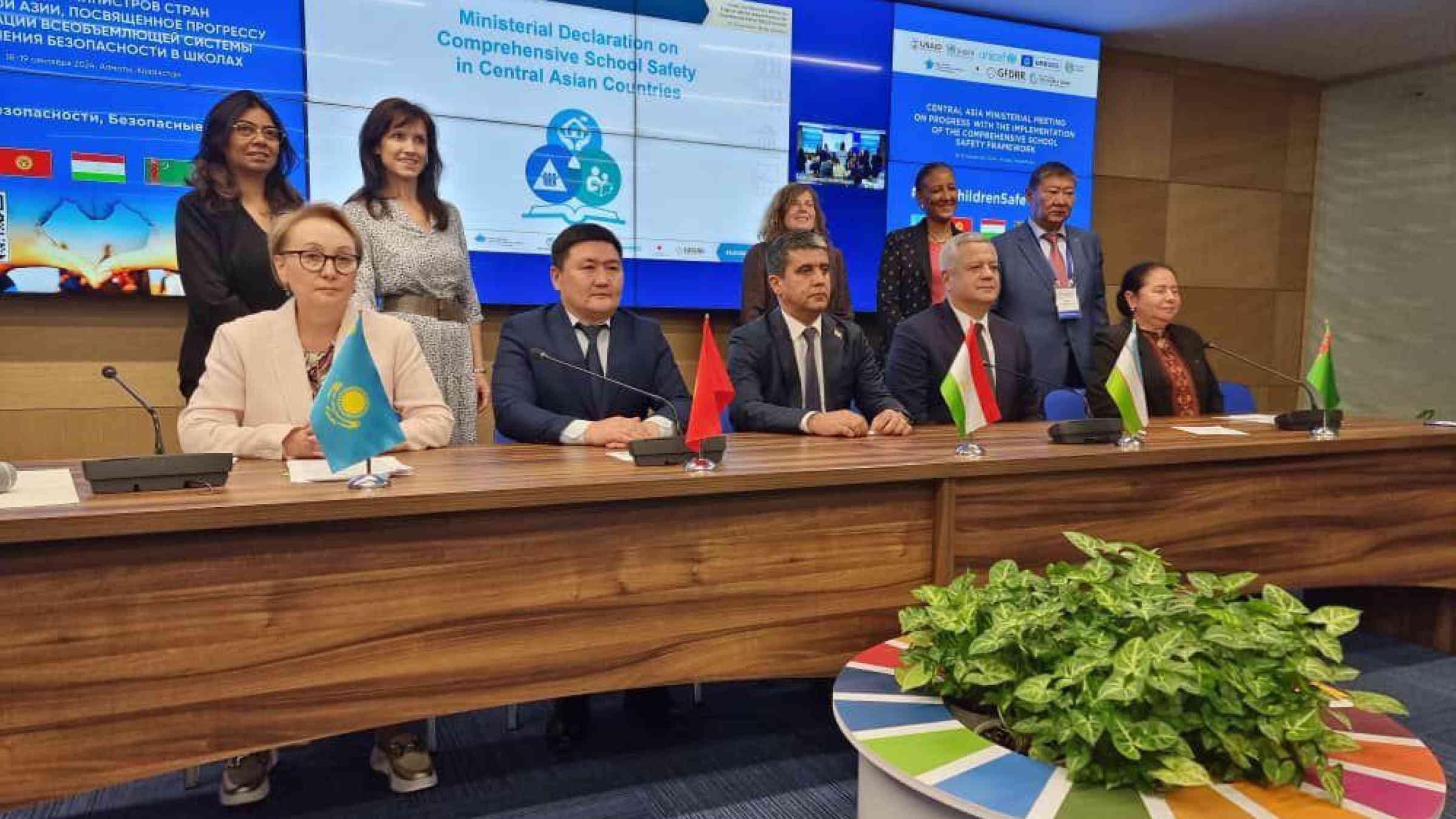Empowering Central Asia’s next generation with safer, disaster-resilient schools

Five Central Asian nations – Kazakhstan, Kyrgyzstan, Tajikistan, Turkmenistan and Uzbekistan – reaffirmed their commitment to safe and resilient schools for children this week – with four endorsing the Comprehensive Safe Schools Framework (CSSF) 2022-2030.
The CSSF provides strategic guidance for governments and partners to enhance school safety, ensuring safe, equitable, and continuous access to quality education for all. This is especially pertinent for schools in disaster-prone areas with structural vulnerabilities that put them at significant risk.
Central Asian countries face hazards including earthquakes, floods, and extreme weather events –all which can threaten children’s safety and continuous access to education.
Empowering the next generation for a resilient future
Broadening implementation of the CSSF is a central focus of this year’s International Day for Disaster Risk Reduction – on 13 October– with its commitment to empowering the next generation for a resilient future.
“For this year's International Day for Disaster Risk Reduction, we are calling on countries to do more to protect and empower children and youth through education,” said Kamal Kishore, Special Representative of the UN Secretary-General for Disaster Risk Reduction, in a video statement in July this year.
We want all countries to endorse
“We want all countries to endorse the Comprehensive School Safety Framework 2022 to 2030, which supports the implementation of the Sendai Framework for Disaster Risk Reduction,” Mr. Kishore said.
“I would like all countries to sign off on that program and make sure that by 2030 we have 100% coverage in terms of school safety across the world. If we do that, we will be really acting with a sense of responsibility towards ourselves, towards our society and towards our future,” he said.
The countries endorsed the CSSF during a ministerial meeting in Almaty, Kazakhstan, co-organized by UNICEF, UNESCO, the UN Office for Disaster Risk Reduction (UNDRR), the Government of Japan, and the World Bank. High-level government officials, development partners, and education experts shared best practices and explored coordinated efforts to protect children and educational institutions from disasters and climate risks.
Safe learning environments where children are protected from risks and disasters
“Schools should provide safe learning environments where children are protected from risks and disasters,” said Dr. Rashed Mustafa Sarwar, UNICEF Representative in Kazakhstan.
“The Comprehensive School Safety Framework provides a clear and structured roadmap for improving school safety at the national and regional levels,” said Natalia Alonso Cano, head of UNDRR’s Regional Office for Europe and Central Asia.
“This involves building institutional capacities, conducting child-centred multi-hazard risk assessments, promoting safer school infrastructure, and advocating for robust school disaster management strategies. Additionally, it emphasizes the integration of disaster risk reduction and climate adaptation into education curricula,” she said.
Held a month ahead of the International Day for Disaster Risk Reduction, the meeting also gave the countries a platform to share their renewed commitment to the Sendai Framework for Disaster Risk Reduction 2015-2030 and the Sustainable Development Goals for 2030.

